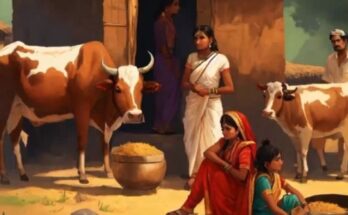Except from the Western Ghats, the Nallamala Forest are likely South India’s longest uninterrupted forest area. Specifically, the portion of the Eastern Ghats that define the eastern boundary of the Telangana state of India’s districts of Nagar kurnool and the Rayalaseema region of the state of Andhra Pradesh are located south of the Krishna River. The hills span almost 430 kilo metres between the rivers Krishna and Pennar in a nearly north-south orientation, parallel to the Coromandel Coast.
The Palnadu basin, which is flat, serves as its northern border, and the Tirupati hills, which are in the south, form its southern boundary. Rich fauna can be found in the deep jungles that span the majority of the range. The Nallamala hills are around 19 miles (31 km) wide and have an average elevation of 520 metres; the highest points are Bhairani Konda at 1100 metres and Gundla Brahmeswara at 1048 metres. From the town of Cumbum, both of these summits are to the north-west. There are a lot more peaks above 800 metres.
The Nallamala forest experiences a warm to hot climate all year round, with the summer months being particularly hot. The winters are often chilly and dry. The South West Monsoon is when it receives the majority of its rainfall. The greatest river in these highlands, the Gundlakamma River, cannot form from underground mountain streams due to the fissured rocks. Open rainforest has nearly totally taken over these hills. Large trees can’t grow if there isn’t enough water. Except for the settlements around the Nallamala Forests, where subsistence farming is conducted, there is essentially no agriculture.
Apart from the Western Ghats, it is perhaps the longest area of unaltered forest in South India, and leopard sightings there are frequent. Since a big portion of the forest is a part of the Nagarjunsagar-Srisailam Tiger Reserve, which has a significant tiger population, the forest is best known for its tigers. According to the most recent estimate, there are now 74 tigers in total, 48 of which are located inside the tiger reserve.
These forests contain a number of locations worth visiting, such as Srisailam on the Krishna River, which is the location of a sizable dam and hydroelectric power complex. The Sri Mallikarjuna Swamy Temple, one of India’s twelve Jyotirlinga temples, and the Brahmarambha Temple, regarded as one of the country’s Shakti Peethas, are both located in Srisailam. All year long, these temples draw a sizable number of tourists. The hill and forest area is home to a lot of waterfalls.
Mahanandi Temple and Ahobilam Nava Narsimha Temples are also worthwhile stops. Sacred lake known as Nemaligundam is created when a stream descends from Gundla Brahmeswara mountain and terminates in a waterfall (Peacock Pool). It is also worthwhile to visit the Mallela Theertham waterfall on the Krishna River in this forest. Tourists can also visit Cumbum Lake, which was created in the 15th century and is one of Asia’s oldest artificial lakes. By damming a small gap between two nearby hills, the Gajapati monarchs of Orissa constructed it in order to irrigate around 420 km2 of farmland. Queen Vardarajamma of the Vijayanagara kingdom later restored it in the 16th century.
Traveling to a location apart from the throngs of people and the concrete jungle can be uplifting for the discerning urbanite. However, due to the excessive number of turns and twists, driving on Nallamala Hills ghat roads can be a little risky. In addition to tigers and leopards, the Nallamala Forest is home to up to 700 kinds of other creatures, including black bucks, wild hogs, peacocks, pangolins, Indian Pythons, King Cobras, and several endangered bird species.
This tiger reserve spans five districts in the two states of Telangana and Andhra Pradesh: Kurnool, Prakasam, Guntur, Nalgonda, and Mahabub Nagar. The tiger reserve has a 3,728 km2 total area, including a 1,200 km 2 core area. Aside from crocodiles and bears, which occasionally occur, a wildlife enthusiast can also witness spotted deer, sambhar, neelghai, chousinga, chinkara, antelopes, monkeys, langurs, porcupines, rattlesnakes, and water dogs. All of this makes it a popular travel destination for photographers, environmental enthusiasts, and birdwatchers. The greatest months to travel are from October through January. Tourists can stay comfortably in one of a dozen hotels or a forest camp. No vehicles are allowed in forest area from 8 pm to 6 am. Nallamala hills and forest are ideal for weekend visit.



























